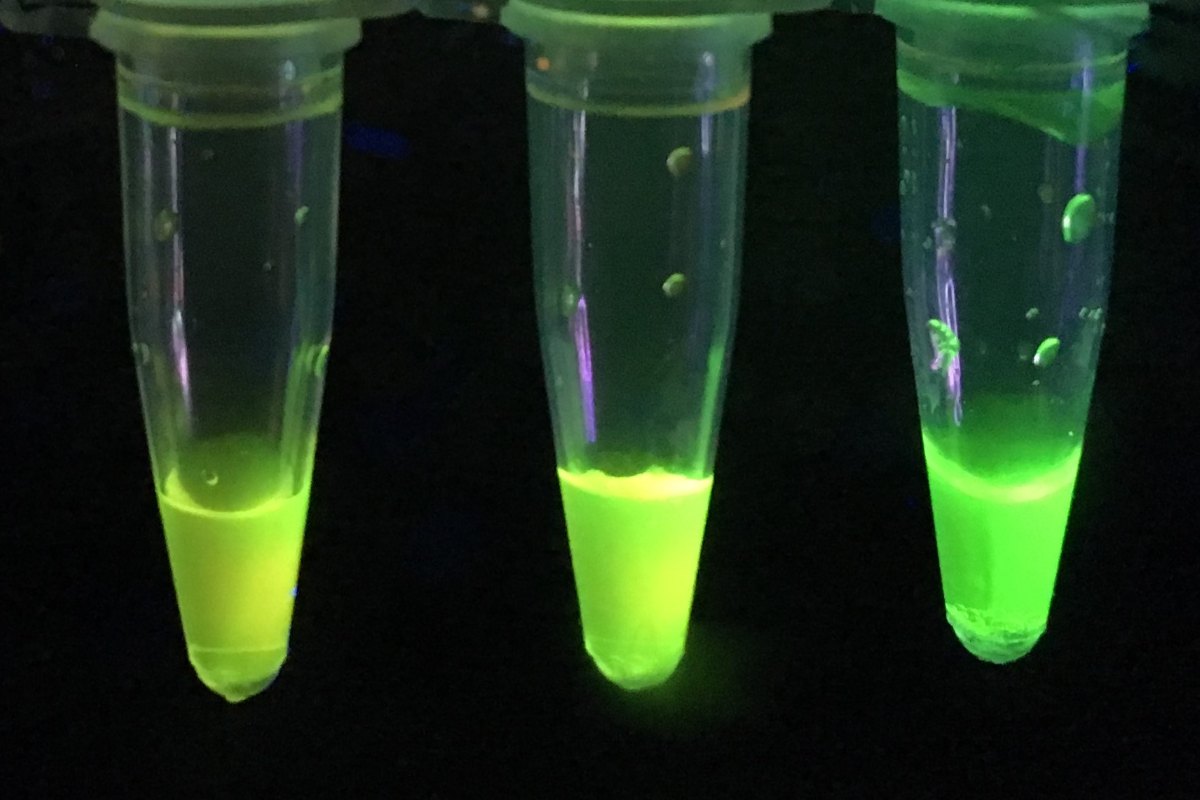
Researchers in the Department of Chemistry have used silicon-based quantum dots to create a sensor that detects the presence of nerve toxins. Image credit: Christopher Robidillo
A new, paper-based sensor can detect potent nerve toxins paraoxon and parathion, according to a new study by University of Alberta chemists.
The sensor uses silicon-based quantum dots to detect these powerful toxins, turning the paper sensors yellow or green, depending on the amount of toxin present. The study also shows that a commercial smartphone application can be used to accurately estimate the amount of paraoxon or parathion in a sample.
"Paraoxon and parathion are nerve agents that have been used as pesticides," explained Jonathan Veinot, professor in the Department of Chemistry and co-author on the study with PhD student Christopher Robidillo. "Accurate detection is important because these substances are potent-they can kill within minutes depending on exposure and treatment. Both have reportedly been used in chemical warfare."
To build the sensors, the research team combined a green fluorescent protein with silicon-based quantum dots that no longer luminesces when exposed to paraoxon and parathion.
"The sensors can be used to test environmental samples and detect the presence of the nerve agents," added Robidillo. "Using a smartphone application, it is possible to estimate the amount of nerve agent present; this is more reliable than simple visual evaluation."
Robidillo is a student in the Alberta/Technical University of Munich International Graduate School for Hybrid Functional Materials (ATUMS) program, funded by the NSERC CREATE program, which allows him to conduct aspects of his research in Munich, Germany.
The paper, Ratiometric Detection of Nerve Agents by Coupling Complementary Properties of Silicon-Based Quantum Dots and Green Fluorescent Protein," was published in ACS Applied Materials & Interfaces (doi: 10.1021/acsami.9b10996).